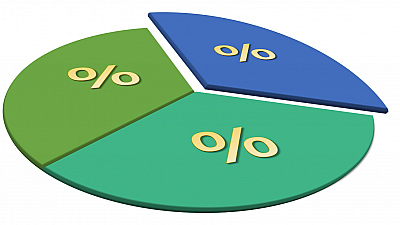When you consider all the risks and develop a proper risk management strategy, you are left with one last equally important step – to prepare your money management rules. They give a mathematical expression of your risk management system, with one phrase standing above all.
DO NOT RISK MORE THAN YOU CAN ACCEPT TO LOSE
Money management refers to the optimal balance between the desired profit and the acceptable loss in a trading strategy. The trading strategy is not a single trade, but a trading pattern applied consistently in a given market over a period of time. Therefore, it’s the net effect of the trading strategy that is evaluated through the money management system, not every single trade.
These systems focus on price and size, which makes them technical notions, rather than fundamental ones. They define the initial capital, the trade size, the asset, the trading style. All these issues depend on technical studies and the use of price action.
RISK : REWARD RATIO
Risk to reward ratio is a basal aspect of money management. It represents the ratio between the risk you take when opening the position, and the expected profit.
These are usually implemented through the positioning of the stop-loss and the take-profit orders. The stop-loss level is the amount of loss you are willing to take if the market moves against you, and the take-profit is the amount of profit that you believe is possible to obtain.
But the risk/reward ratio is much more than placing S/L and T/P orders. It is a property of the trading system itself. It shows the profit ratio over a series of similar trades. Measuring their net effect is how you can fully grasp its concept and take the full advantage of a good risk/reward ratio.
POSITION SIZING
Position sizing is a way to calculate your position size, depending on the amount of risk you accept to take. Or, in other words, you decide on the risk, and you adjust the size of the position in accordance with that risk.
The first step is to decide how much money you would be comfortable losing per single trade. This is not to say that you should always expect to lose, yet you have to be ready to accept that happening.
There are two ways to determine this. You can have a fixed amount that you would be risking with every trade. Or, you can determine a percentage of your total account balance. Usually, traders choose to risk no more than 1-2% per trade.
The second option is the more flexible one because as you win and your account grows, you automatically start trading with higher amounts. And the other way around, if you are losing, the method automatically reduces the amount at risk. Of course, you can always go with the first option and change the fixed amount whenever necessary.
To make things clearer, let’s follow up an example. We have an account balance of $ 5000 and we’ve decided to risk 1% of our account. This means that we are willing to risk $ 50 for the trade.
Account risk = $ 5000 * 1 % = $ 50 maximum amount to risk
The next step is to find a logical level for your stop-loss. This way of positioning your order gives you the opportunity to start exactly from where you don’t want to end up.
That is why choosing it wisely is very important. It should not be too close to the entry level, because this could end the position prematurely, but at the same time it must not be too far away.
For our example, let’s assume that we are trading EUR/USD and we decide to put our stop loss at 1.1184 and to enter the market at 1.1234.
The difference between the entry level and the stop-loss level gives you the pips at risk.
Trade risk = 1.1234 – 1.1184 = 0.0050 (50 pips at risk)
It is important to know the lot sizes that are available for trading. You can combine them to get the position size that serves your needs.
⇒ 1 micro lot = 1 000 units; 1 pip = $ 0.1
⇒ 1 mini lot = 10 000 units; 1 pip = $ 1
⇒ 1 standard lot = 100 000 units; 1 pip = $ 10
These calculations are valid for all currency pairs where USD is the quoted (the second) currency. They show that for every 1 pip movement in the price, you win / lose $ 0.1, or $ 1, or $ 10, depending on what lot size you trade.
For our example, we decide to trade mini lots. From there we can calculate the size of the position.
Position size = Account risk / (Trade risk * Pip value for lot)
$ 50 / ( 50 pips * $ 1) = 1 mini lot
If our position was to have a 25-pips stop and we decided to trade micro lots, the calculation would be:
Position size = Account risk / (Trade risk * Pip value for lot)
$ 50 / ( 25 pips * $ 0.1) = 20 micro lots (or that’s 2 mini lots)
Money management is an objective way to calculate the elements of a position. This is important in trading because these markets are no place for gambling.
Computer technology can be very beneficial when it comes to money management.
Position-size, Risk-reward, Margin and Pip-Value calculators are available to you and can easily do the math for you.
In fact, it is worth having a more automated trading system.
It is only natural to try to keep your losses as small as possible, and profits as high. But meddling with your orders is usually not the best decision. In trading discipline is King. And everyone who fails to strictly follow his own rules, is likely to end up on the wrong side of the statistics.




